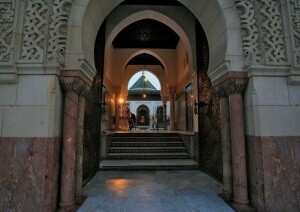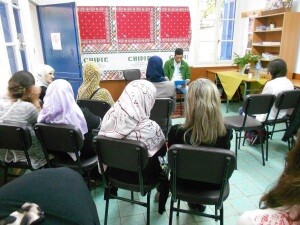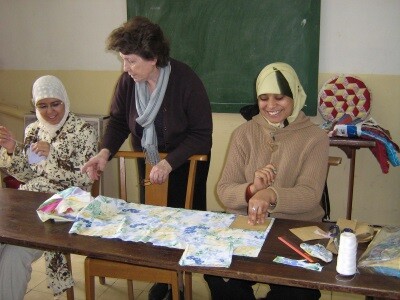A palette full of colors of the “living together”
“Always a ray of sunshine your messages, my dear Josette.
I discovered an intimate face of Islam
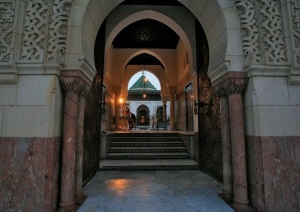 At the beginning of my stay in Paris, a happy event led me to discover the existence of a spiritual-sharing-group at the great mosque in Paris
At the beginning of my stay in Paris, a happy event led me to discover the existence of a spiritual-sharing-group at the great mosque in Paris
The Palmiers library
 A Feast Day for students:
A Feast Day for students:
It is possible to live in harmony with our Algerian brothers and sisters
My main work now is welcoming people to the Basilica of Our Lady of Africa, three days a week. In fact, having lived so many years in Algeria, since 1959, and knowing several languages (Arabic, German, Italian and French), is a valuable asset to receive and inform visitors to this high point in Algeria.
Learning the language of the people who welcome us
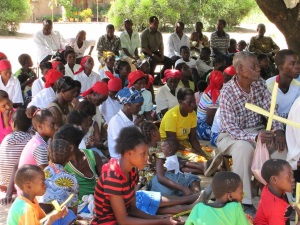 How to reach someone if I do not speak their language? How to get close to them if I do not understand? How to love a people and their culture if I do not understand their language?
How to reach someone if I do not speak their language? How to get close to them if I do not understand? How to love a people and their culture if I do not understand their language?
Learn to communicate well
Here is a small very useful methodology for respectful communication:
Take responsibility for what you say and feel without blaming others.
Choose empathic listening
Be sensitive to the different communication styles
Take time to reflect on what you feel and what you hear before intervening
Examine your prejudices and perceptions
Guard confidentiality
Take advantage of ambiguities because we are not there to find out who is wrong and who is right
Friendship is the soul of dialogue
Friendship is the soul of dialogue. True friendship demands equality among people. It is not compatible with feelings of superiority or attitudes of condescension. Cardinal Leon- Etienne Duval of Algiers (1904-1996) True to its origins, the Congregation pays special attention to the believers of Islam. God, who is at the heart of every person, leads them in ways known only to him. We respect their way of faith different from ours, in the hope that we are all on the way to the Kingdom. In the various countries of the world where we live, we seek to promote an attitude of openness between Christians and Muslims through our activities and our friendship.



